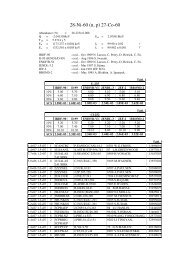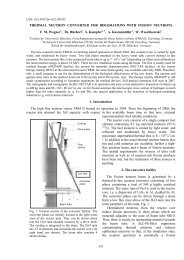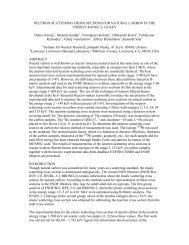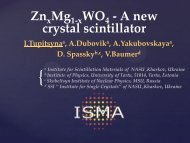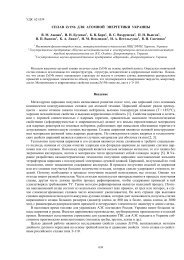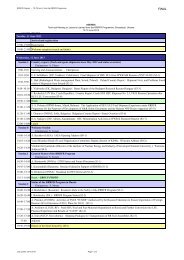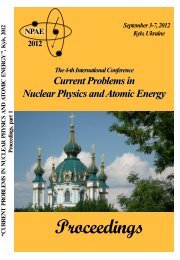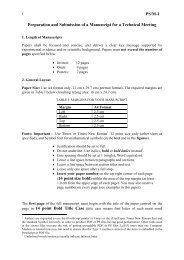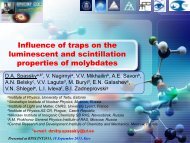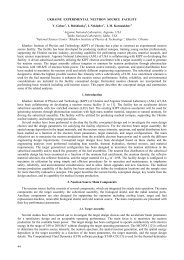International Reactor Dosimetry File 2002 - IAEA Publications
International Reactor Dosimetry File 2002 - IAEA Publications
International Reactor Dosimetry File 2002 - IAEA Publications
You also want an ePaper? Increase the reach of your titles
YUMPU automatically turns print PDFs into web optimized ePapers that Google loves.
9. DECAY DATA AND ISOTOPIC ABUNDANCES FOR<br />
DOSIMETRY APPLICATIONS<br />
O. Bersillon<br />
A major objective of dosimetry is to determine the neutron fluence (also<br />
described as the neutron flux) by the use of activation measurements made at<br />
various points in a nuclear reactor. Other possible areas of application of<br />
dosimetry include the determination of activation and transmutation products,<br />
and of radiation damage and gas production. Nuclear data libraries such as<br />
IRDF-90 are dedicated to such applications, and consist only of neutron<br />
induced cross-sections. The main experimental method uses the measurement<br />
of selected radiations emitted by the radionuclides, which are produced by the<br />
neutron irradiation process. A new IRDF-<strong>2002</strong> library has been prepared that<br />
contains a section dedicated to evaluated decay data, containing all such data<br />
necessary to reduce and process the experimental results.<br />
The successive steps described in this section start with the basic data<br />
given in the Evaluated Nuclear Structure Data <strong>File</strong> (ENSDF) library [9.1] and<br />
progress to the final database in ENDF-6 format [9.2]. Recommendations are<br />
also made concerning the use of a recent determination of isotopic abundances.<br />
9.1. DECAY DATA<br />
9.1.1. Selection of radionuclides<br />
A selection of the target elements has been made (Section 6), together<br />
with the associated nuclear reactions with those nuclear reactions for which<br />
cross-sections are given in the IRDF-<strong>2002</strong> library. This procedure was used to<br />
establish an initial list of radionuclides to be considered for inclusion in the<br />
decay data section of the library. Furthermore, the fission channel is characterized<br />
by the following selected fission products [9.3]: 95 Zr + 95 Nb; 97 Zr + 97 Nb;<br />
103 Ru; 106 Ru + 106 Rh; 131 I; 132 Te + 132 I; 137 Cs + 137 Ba m ; 140 Ba + 140 La; 141 Ce; 143 Ce +<br />
143 Pr; and 144 Ce + 144 Pr.<br />
The list of nuclides is completed by the inclusion of the intermediate<br />
radionuclides that are required to reach the stability valley. Thus the decay data<br />
included in the IRDF-<strong>2002</strong> library contain a total of 85 radionuclides: 58<br />
ground states (of which seven have two decay modes), 25 first isomeric states<br />
(of which eight have two decay modes) and two second isomeric states ( 116 In n<br />
and 196 Au n ).<br />
99



